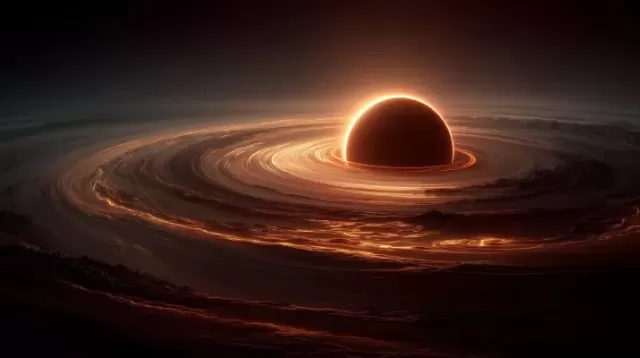Exoplanets: New Tools for Unraveling the Mysteries of Dark Matter
Sept 01, 2025
A new study proposes that exoplanets could be used to detect dark matter. Superheavy dark matter particles, drawn into exoplanet cores, might create planet-mass black holes, providing observational evidence of dark matter and challenging current black hole formation theories.

The ever-expanding catalog of exoplanets – planets orbiting stars beyond our sun – presents a unique opportunity to probe one of the universe's greatest enigmas: dark matter. A groundbreaking study from UC Riverside suggests that these distant worlds could act as natural laboratories, allowing scientists to test theories about the nature and behavior of this elusive substance.
Dark matter, believed to constitute the vast majority of matter in the universe, has so far eluded direct detection. While its existence is inferred from its gravitational effects on galaxies and other celestial objects, its fundamental properties remain unknown. This new research explores the potential for exoplanets, particularly those comparable in size to Jupiter, to interact with dark matter in ways that could ultimately lead to their transformation into miniature black holes.
The core idea hinges on the "superheavy non-annihilating dark matter" model. This theory posits that dark matter particles are extraordinarily massive and, unlike some other theoretical particles, do not destroy each other upon contact. According to the study's calculations, these particles could be gradually drawn into the cores of exoplanets through gravitational attraction. Over eons, the accumulated dark matter could reach a critical density, causing it to collapse and form a tiny black hole.
This nascent black hole, initially small, could then begin to devour the host planet from the inside out. Eventually, the entire exoplanet would be consumed, leaving behind a black hole with the same mass as the original planet. This scenario, while theoretical, presents a compelling prospect for indirectly detecting dark matter through observations of exoplanets.
The implications of this research are far-reaching. Astronomers have, up to now, only observed black holes with masses several times that of our sun. The discovery of a planet-mass black hole would not only lend credence to the superheavy dark matter model but also challenge existing theories about black hole formation. Current models generally assume such small black holes could only have formed in the very early universe under extreme conditions.
Why Exoplanets? A New Frontier in Dark Matter Research
Traditionally, scientists have sought to understand dark matter by studying its effects on objects like the sun, neutron stars, and white dwarfs. However, the rapid advancements in exoplanet detection and characterization are opening up new avenues of investigation. Data from current and future space missions are providing unprecedented detail about the atmospheres, sizes, and orbital characteristics of exoplanets. This wealth of information allows scientists to test different dark matter models with greater precision.
For instance, the very existence of numerous exoplanets, including Jupiter within our own solar system, places constraints on certain dark matter models. If dark matter readily triggered black hole formation, these planets might not exist today. This observational constraint helps to refine the parameters of viable dark matter candidates.
Looking Ahead: The Hunt for Planet-Sized Black Holes
The ultimate goal is to identify a population of planet-sized black holes. Such a discovery would provide strong support for the superheavy non-annihilating dark matter model and revolutionize our understanding of both dark matter and black hole physics.
Beyond black hole formation, the interaction between dark matter and exoplanets could manifest in other detectable ways. For example, dark matter particles interacting within an exoplanet's interior could generate heat or emit high-energy radiation. While current instruments may lack the sensitivity to detect these subtle signals, future generations of telescopes could potentially unveil these hidden signatures.
In conclusion, the burgeoning field of exoplanet research is poised to play a crucial role in the quest to understand dark matter. By combining theoretical models with observational data, scientists are leveraging these distant worlds to shed light on one of the universe's most profound mysteries. The search for dark matter has expanded beyond traditional celestial objects, and exoplanets are now at the forefront of this exciting endeavor.
